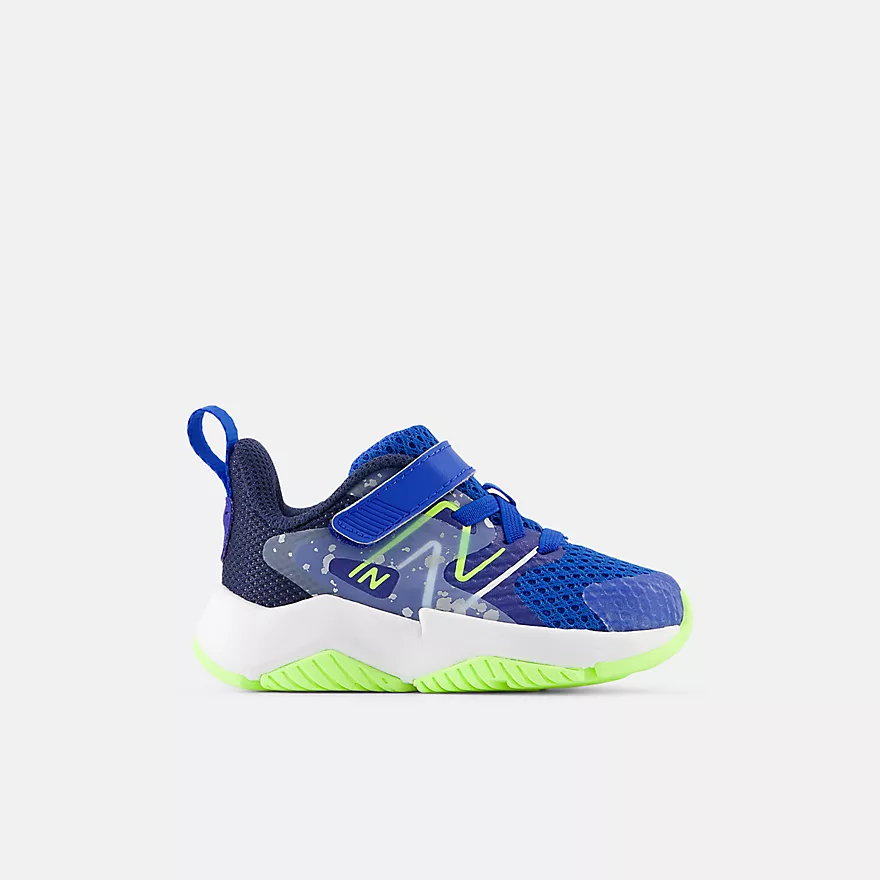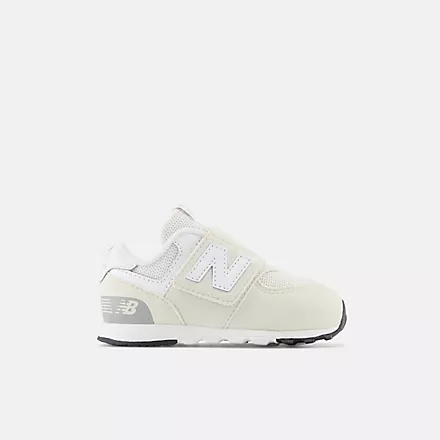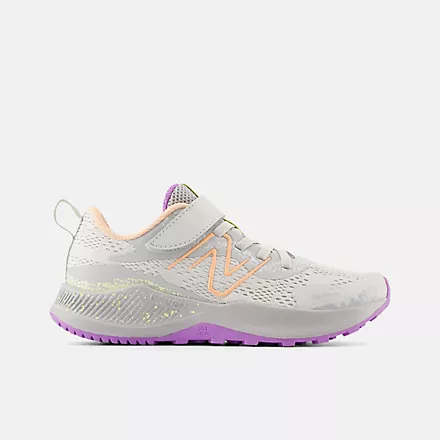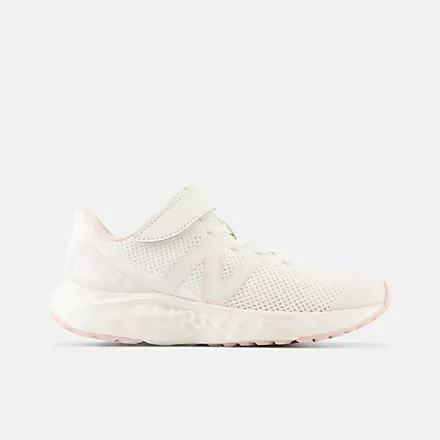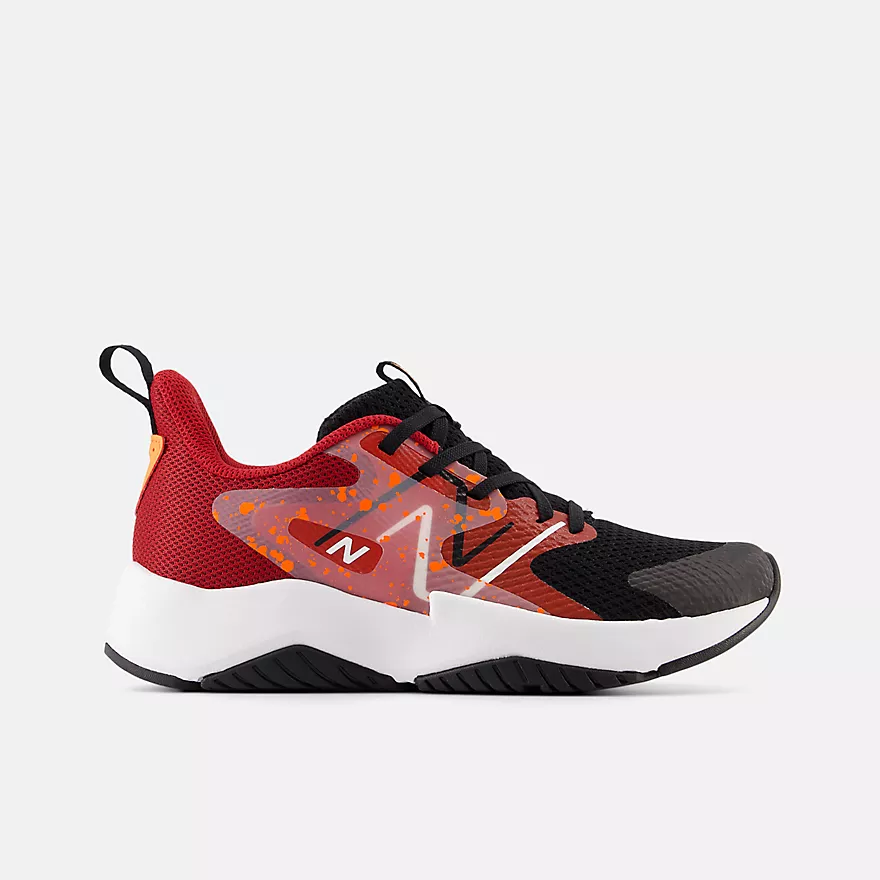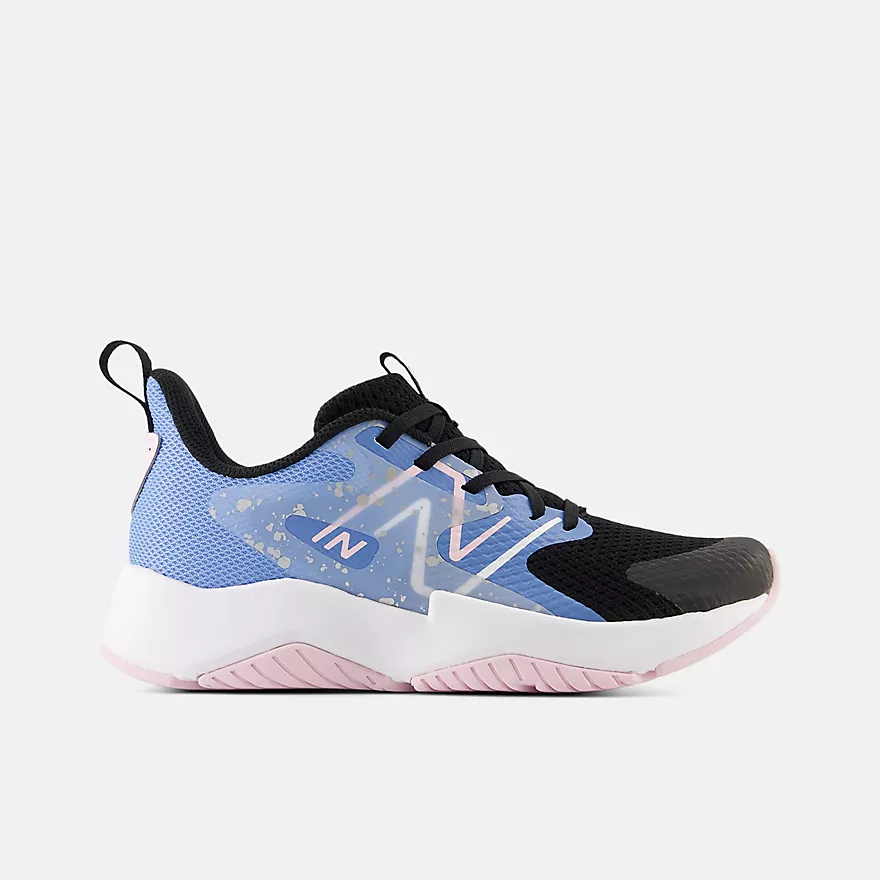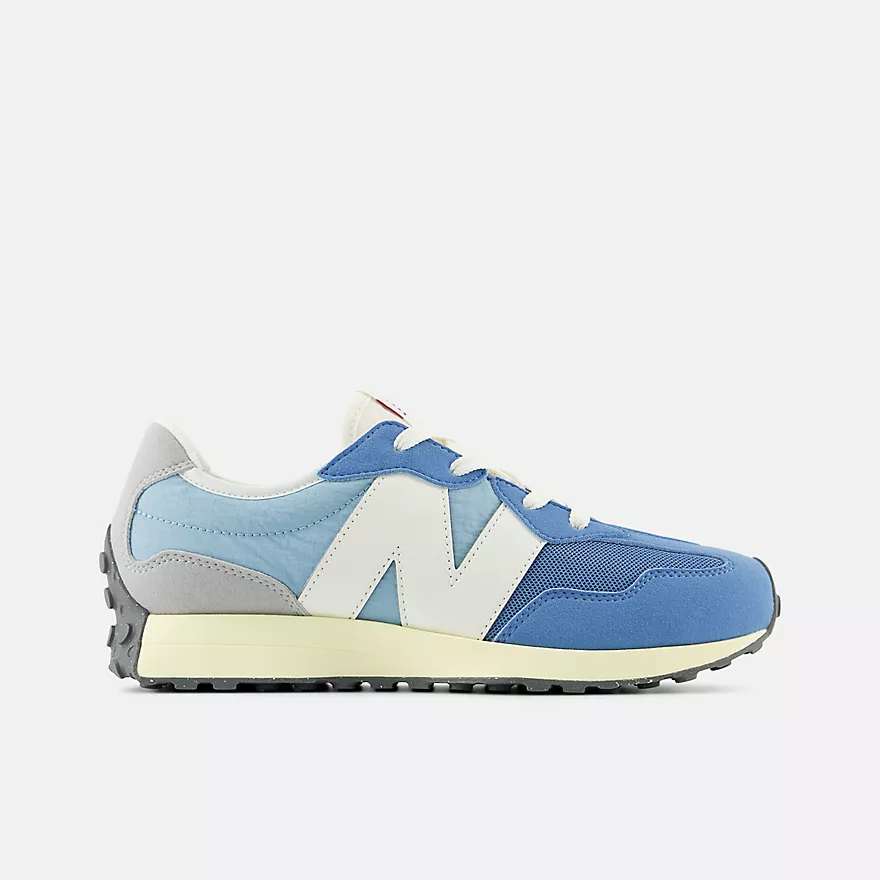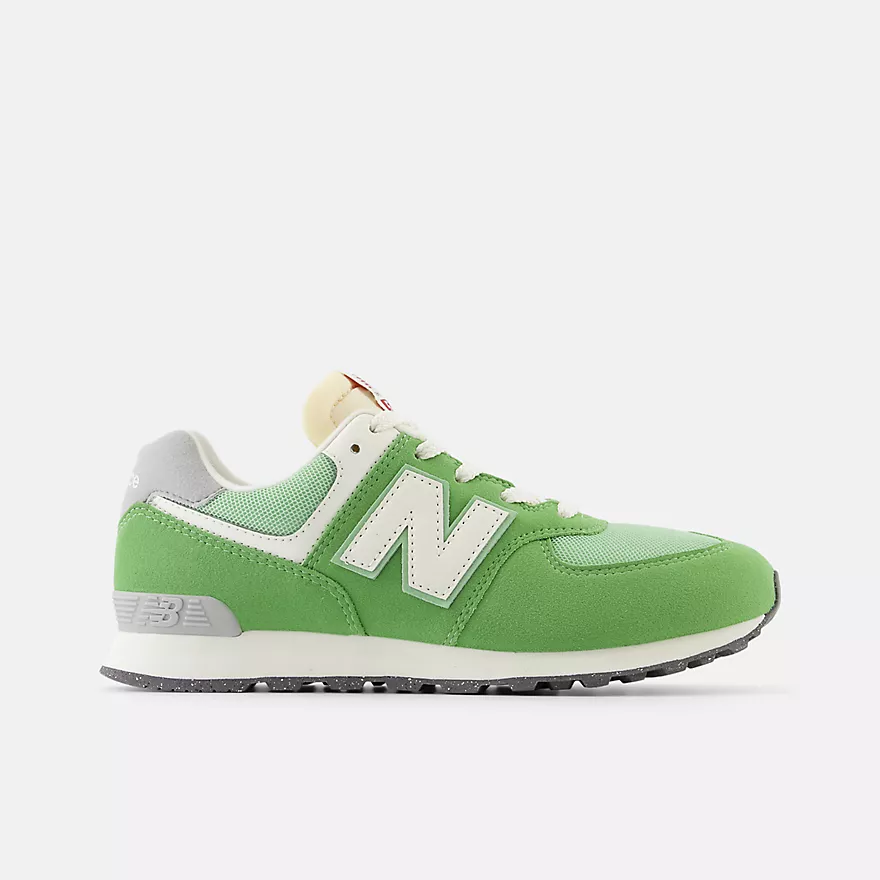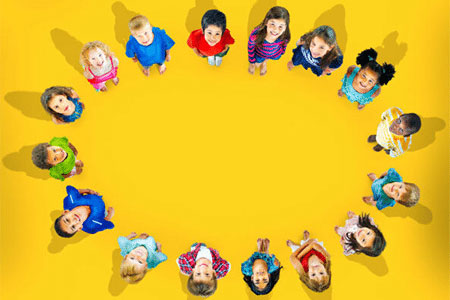How to Choose Shoes for Kids – Learn How to Keep Your Kids’ Feet Healthy!
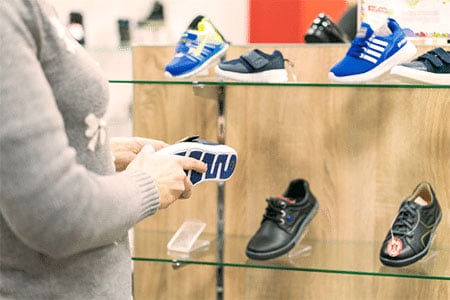
All parents want their children to be healthy and to grow and develop without having to experience health problems that require frequent visits to the doctor. Luckily, most foot and ankle problems in children can be treated so as the child continues to grow, the feet function properly and without pain. The most important factor in choosing shoes for your child is that the shoes fit the shape of your kids’ feet properly and never force your kids’ feet to fit in the shoes. Let me show you how to choose shoes for kids based on my many years of shoe fitting experience.
Once children start walking and need a pair of shoes, you must provide them with the correct type of shoes and this involves getting the correct shoe style in the correct shoe length and the correct shoe width.
One common mistake that I see parents make is how they choose their kids’ shoes more motivated by fashion than by what their kids’ feet really need. This can lead to several foot issues such as blisters, calluses, and corns, as well as foot and leg pain.
What is crucial when picking your kids’ shoes is to find shoes that support, cushion, and protect the feet. Some shoes do the exact opposite of what shoes should do, which can cause serious problems to your kids’ feet rather than supporting and cushioning their feet.
Do You Have a Good-Fitting Children’s Shoe Store in Your Area?
Keep in mind that I always recommend parents take their children to be properly fitted for shoes at their local children’s shoe store that they trust, where a shoe fitter can properly measure their feet and find shoes accordingly. The issue is that most local children’s shoe stores have been closing down and we are left with big retailers that don’t have people who know how to fit shoes.
I created a resource that describes the remaining best-fitting children’s shoe stores by state.
If you are one of these parents without a children’s shoe store in your area, you have nothing to worry about as I will describe exactly how to make sure your kids’ shoes fit and I will also provide you with a selection of the best everyday shoes for children.
Choosing the correct type of shoes for your child will promote healthy foot development by providing needed stability and support.
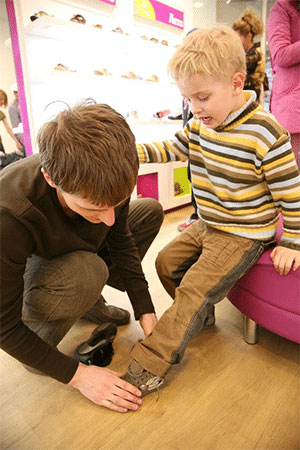
When babies take their first steps, they begin their practice of a complex task that involves balance and coordination, muscles and joints, legs and feet. Foot health is extremely valuable to overall body health, that’s the reason why it’s so important to provide your children with the correct pair of shoes from an early stage to keep their feet and legs healthy.
I always try to emphasize one thing to parents: Shoes are so much more than simply coverings of the feet.
Shoes should also always feel comfortable, right from day one. So, if your child is already capable of expressing himself or herself and is complaining that the shoes don’t feel right, don’t fall for the trap that shoes need a “break-in period”. Shoes will indeed get softer as you wear them, but they also should feel comfortable before your child leaves the shoe store.
How to Retrieve Your Child’s Exact Foot Length and Shape
If your child complains that the shoe is pinching or rubbing his or her feet the wrong way, don’t buy the shoes! Did you know that shoe size and fit vary widely between styles and manufacturers? Always keep looking until you find a shoe that properly fits the shape of your child’s feet.
What does a proper fit actually mean?
This means that you should always fit your kids’ shoes to accommodate their longest and widest foot, making sure that there is a half-thumbnail width between the longest toe and the end of the shoe.
To accomplish this, you must measure your kids’ feet with your child standing up. I created a different article that helps parents determine their child’s exact foot size and whether the child has narrow, medium, wide, or extra wide feet. I also will be able to tell you whether your child has a high instep or not.
This is the reason why I created a selection of the most supportive, yet lightweight and flexible kids’ shoes that are also available in different widths such as narrow, medium, wide and extra wide widths.
The Best Everyday Children’s Shoes
The shoes below can fit children with medium (M), wide (W), or extra wide (XW) feet as long as you choose the width accordingly. Disclosure: Keep in mind that we may receive commissions when you click our links and make purchases.
Toddler Shoe Sizes (0 to 10)
- Shoe style RaveRun by New Balance
- Available in medium, wide and extra wide widths
- Oversized opening for easy on and off
- Lightweight injection-molded EVA foam midsole provides lightweight cushioning
- Hook and loop closure
- Order this shoe a whole size larger than your toddler’s current foot size
- Shoe style RaveRun by New Balance
- Available in medium, wide and extra wide widths
- Oversized opening for easy on and off
- Lightweight injection-molded EVA foam midsole provides lightweight cushioning
- Hook and loop closure
- Order this shoe a whole size larger than your toddler’s current foot size
- Shoe style Original Jazz Lite 2.0 by Saucony
- Available in medium and wide widths
- Velcro closure
- Leather and mesh upper for durability and breathability
- APMA Certified
- Traction pods on the outsole for serious grip
- EVA midsole for lightweight feel
- Order this shoe a whole size larger than your toddler’s current foot size
- Shoe style Ride 10 Jr by Saucony
- Available in medium, wide, and extra wide widths
- Velcro closure
- Leather and mesh upper
- Non-marking traction pods to help improve stability
- APMA approved
- Toe cap for extra durability
- Order this shoe a whole size larger than your toddler’s current foot size
- Shoe style 2510 by Tsukihoshi
- Fits medium and wide feet (fits high insteps)
- Velcro closure
- Removable insoles
- Lightweight and flexible
- Extra wide toe box allows natural splaying of toes for better balance, comfort, and foot health
- Long heel counter provides stability
- Machine washable
- Order this shoe the same size as your toddler’s current foot size (shoe fits long)
- Shoe style 2510 by Tsukihoshi
- Fits medium and wide feet (fits high insteps)
- Velcro closure
- Heel stabilizer provides lateral stability
- Removable insoles
- The insoles are Infused with natural Green Tea extract (no chemicals)
- Machine washable
- Order this shoe the same size as your toddler’s current foot size (shoe fits long)
- New Balance shoe style Fresh Foam 650
- Fits children with medium, wide, or extra wide feet
- Velcro closure
- Leather and mesh upper
- Mesh collar and tongue are padded with foam for a great fit and added comfort
- Extra deep
- Order this shoe a whole size larger than your toddler’s current foot size
- Shoe style 574 by New Balance
- Available in medium, wide, and extra wide widths (fits high insteps)
- Velcro closure
- Oversized opening for easy on and off
- Fresh Foam midsole cushioning is precision engineered to deliver an ultra-cushioned, lightweight ride
- Order this shoe a whole size larger than your toddler’s current foot size
- Shoe style Fresh Foam by New Balance
- Available in medium, wide and extra wide widths
- Oversized opening for easy on and off
- Lightweight injection-molded EVA foam midsole provides lightweight cushioning
- Hook and loop closure
- Order this shoe a whole size larger than your toddler’s current foot size
- Shoe style Sr Thompson by Stride Rite
- Available in medium and wide widths (fits high insteps)
- Velcro closure
- Ortholite memory foam footbeds
- Opens super wide which makes in and out easy
- Recycled material linings to help reduce odor
- Order this shoe half a size larger than your toddler’s current foot size
- Shoe style SRT Winslow by Stride Rite
- Available in medium and wide widths (fits high insteps)
- Velcro closure
- Toe cap reinforcement and bumptoe protection against stumbles
- Opens super wide which makes in and out easy
- Step-stabilizing design with comfy Ortholite memory foam footbeds
- Order this shoe half a size larger than your toddler’s current foot size
- Shoe style Fresh 574 by New Balance
- Available in medium, wide and extra wide widths
- Oversized opening for easy on and off
- No-sew overlays
- Order this shoe a whole size larger than your toddler’s current foot size
- See Kai Run shoe style Robyne
- Fits children with medium, wide, or extra wide feet
- Breathable textile lining and cushioned insole
- Double velcro straps for easy on and off adjustability
- Padded tongue and collar for added comfort
- Order this shoe a half size larger than your toddler’s current foot size
- See Kai Run shoe style Robyne
- Fits children with medium, wide, or extra wide feet
- Canvas upper
- Toe cap is durable for early steps
- Double velcro straps
- Oversized opening for easy on and off
- APMA approved
- Order this shoe half a size larger than your toddler’s current foot size
- Shoe style 574 New-b V1 by New Balance
- Available in medium, wide, and extra wide widths (fits high insteps)
- Velcro closure
- Generous toe box and instep to accommodate and support a first-walker’s needs
- Mesh and suede upper for durability and comfort
- Extra deep
- Order this shoe a whole size larger than your toddler’s current foot size
- Shoe style 574 New-b V1 by New Balance
- Available in medium, wide, and extra wide widths (fits high insteps)
- Velcro closure
- Generous toe box and instep to accommodate and support a first-walker’s needs
- Mesh and suede upper for durability and comfort
- Extra deep
- Order this shoe a whole size larger than your toddler’s current foot size
Little and Big Kid Sizes (10.5 to 7)
- Shoe style RaveRun by New Balance
- Available in medium, wide, and extra wide widths
- Velcro closure
- Synthetic and engineered mesh upper
- Stitched-on toe cap for extra durability
- Order this shoe a half size larger than your child’s current foot size
- Shoe style Nitrel v5 by New Balance
- Available in medium and wide widths
- Velcro closure
- Synthetic and engineered mesh upper
- Stitched-on toe cap for extra durability
- Order this shoe a half size larger than your child’s current foot size
- Shoe style Russell by See Kai Run
- Fits medium, wide, and extra wide feet (fits high insteps)
- Double velcro straps
- Removable, contoured, leather-lined footbed for breathability and comfort
- Lightweight and flexible
- Order this shoe a half size larger than your child’s current foot size
- Shoe style Robyn by See Kai Run
- Fits medium, wide, and extra wide feet (fits high insteps)
- Double velcro straps
- Removable, contoured, leather-lined footbed for breathability and comfort
- Lightweight and flexible
- Order this shoe a half size larger than your child’s current foot size
- Shoe style Velocity by Tsukihoshi
- Fits medium and wide feet (fits high insteps)
- Velcro closure
- Heel stabilizer provides stability
- Removable insoles
- The insoles are Infused with natural Green Tea extract (no chemicals)
- Machine washable
- Order this shoe the same size as your child’s current foot size (shoe fits long)
- Shoe style 3584 Rainbow by Tsukihoshi
- Fits medium and wide feet (fits high insteps)
- Velcro closure
- Removable insoles
- The insoles are Infused with natural Green Tea extract (no chemicals)
- Machine washable
- Order this shoe the same size as your child’s current foot size (shoe fits long)
- Shoe style Fresh Foam 650 Bungee by New Balance
- Available in medium, wide, and extra wide widths (fits high insteps)
- Velcro closure
- Mesh collar and tongue are padded with foam for a comfortable fit
- Fresh Foam midsole cushioning is precision engineered to deliver an ultra-cushioned, lightweight ride
- Order this shoe a whole size larger than your child’s current foot size
- Shoe style Fresh Foam Arishi v4 by New Balance
- Available in medium, wide, and extra wide widths (fits high insteps)
- Velcro closure
- Synthetic and engineered mesh upper
- Durable rubber outsole designed to withstand wear-and-tear
- Order this shoe a half size larger than your child’s current foot size
- Shoe style Arishi v4 by New Balance
- Available in medium, wide, and extra wide widths (fits high insteps)
- Velcro closure
- Mesh collar and tongue are padded with foam for a comfortable fit
- Fresh Foam midsole cushioning is precision engineered to deliver an ultra-cushioned, lightweight ride
- Order this shoe a whole size larger than your child’s current foot size
- The New Balance shoe style RaveRun is available for little and big kids
- Fits children with medium, wide, or extra wide feet
- Available in laces
- No-sew overlays for a sleek fit and feel
- Mesh collar and tongue are padded with foam for a great fit and added comfort
- Order this shoe half a size larger than your child’s current foot size
- The New Balance shoe style RaveRun is available for little and big kids
- Fits children with medium, wide, or extra wide feet
- Available in laces
- Leather and mesh upper
- No-sew overlays for a sleek fit and feel
- Order this shoe half a size larger than your child’s current foot size
- Shoe style Axon by Saucony
- Available in medium and wide widths
- EVA midsole provides increased shock attenuation, responsive cushioning and lasting durability
- Cushioned footbed
- Order this shoe a whole size larger than your child’s current foot size
- Shoe style Axon by Saucony
- Available in medium and wide widths
- EVA midsole provides increased shock attenuation, responsive cushioning and lasting durability
- Padded tongue and collar
- Cushioned footbed
- Order this shoe a whole size larger than your child’s current foot size
- New Balance shoe style Fresh Foam 880v12
- Fits children with medium, wide, or extra wide feet
- Lace-up closure
- Dual-layer midsole construction featuring top-bed foam cushioning and underfoot Fresh Foam X
- Order this shoe half a size larger than your child’s current foot size
- Shoe style 480 V1 by New Balance
- Available in medium and wide widths
- Lace-up closure
- Lightweight EVA midsole
- Leather and mesh upper for durability & breathability
- Order this shoe a whole size larger than your child’s current foot size
- Shoe style 327 by New Balance
- Available in medium and wide widths
- Lace-up closure
- FuelCell foam delivers a propulsive feel to help drive you forward
- Order this shoe a whole size larger than your child’s current foot size
- New Balance shoe style FuelCell Propel v5
- Fits children with medium, wide, or extra wide feet
- Dual-layer midsole construction featuring top-bed foam cushioning and underfoot Fresh Foam X
- Order this shoe a whole size larger than your child’s current foot size
- Shoe style 574 by New Balance
- Available in medium and wide widths
- Lace-up closure
- ENCAP midsole cushioning provides good arch and heel support
- Leather and suede upper
- Order this shoe half a size larger than your child’s current foot size
- New Balance shoe style Fresh Foam Arishi v4
- Fits children with medium, wide, or extra wide feet
- Lace-up closure
- Mesh upper is lightweight and breathable
- Lightweight EVA foam cushioning in the midsole and padded heel increases comfort
- Firm heel counter
- Supportive heel for active kids
- Order this shoe a half size larger than your child’s current foot size
A child’s shoe size can change as often as 3 months, so always check the fit of your kids’ shoes frequently.
Remember that these shoe styles are available in different widths such as medium, wide, and extra wide, so no matter how wide your kids’ feet are, these shoes will accommodate the shape of their feet.
The Do’s and Don’ts of Shoe Fitting – Keep Your Kids’ Feet Healthy!
Second-hand shoes are commonly used in children, but I always explain to parents that this is not a good idea unless the shoes are infrequently worn and are in good shape.
I always strongly advise parents to not provide their children with high-heeled shoes, because these shoes encourage foot deformities to develop and can lead to ankle, calf, and lower back pain.
Also, keep in mind that flip flops and certain sandals can create several problems for your kids’ feet. They lack arch support – this can lead to pain in various joints and tendons, they don’t protect from fallen objects, and they expose the top of the foot to the sun, which increases the chances of developing skin cancer.
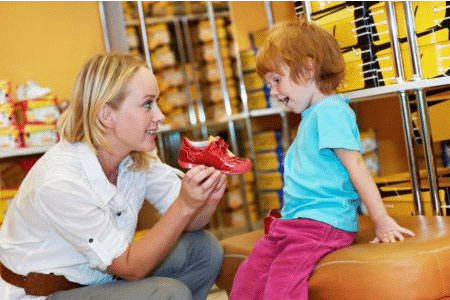
Let’s take a look at some do’s and don’ts that will help you understand how to keep your kids’ feet healthy:
Do:
- Wash your kids’ feet, including between the toes, daily with water and mild soap.
- Thoroughly dry your kids’ feet and between the toes after washing them.
- Moisturize your kids’ feet (but not between the toes) after washing them.
- Always trim your kids’ toenails straight across rather than by rounding them.
- Inspect your kids’ feet regularly to make sure there are no cuts, blisters, dry skin, or other skin marks.
- Make sure your child is wearing shoes that fit properly and that are designed for that specific activity they might be doing. Pay special attention if you provide your child with open-toe shoes, sandals, and flip flops since they can easily injure their feet especially on escalators and elevators.
- Alternate your kids’ shoes from day to day to allow the shoes to dry out.
Don’t:
- Allow your child to walk barefoot outside the house because of the risk of wounding the feet and getting an infection.
- Wear shoes that are too short, too narrow, too big, or too wide because they will cause problems such as blisters, calluses, and corns.
- Allow your child to share shoes with other children because this can lead to skin and toenail fungal infections. You also shouldn’t provide your child with hand me down shoes since shoes start losing their support and cushioning as they wear down. Keep in mind that shoes wear down according to a child’s individual structure and function. For example, if a child tends to pronate he or she will wear the shoe down on the inside, and if that shoe gets passed down to a supinator it can have a devastating effect.
- Soak the feet in the water since this will dry your kids’ skin and increase the risk of an open wound becoming infected.
- Ignore your kids’ foot or leg pain because this is an indication of the body that something is wrong.
Always take your child to your physical or occupational therapist if your child is experiencing any of the following or if you notice:
- Persistent pain or swelling of the foot.
- Discoloration of the skin or toenails.
- Pain in the foot or ankle that gets worse with activity.
- A flattening of your kids’ foot arch.
Now that you know how to choose shoes for your child and what are the best everyday shoes for children, you are ready to make the most informed decision.
Are Any Other Shoe Choices Available?
Do not hesitate to contact me directly at my e-mail if you have any further questions or if you need a different pair of shoes for your child. My e-mail address is:
Do you have a children’s shoe store in your area that you trust? I get contacted by parents daily that want to know if there is a good children’s shoe store in their area, so if you share yours in the comments section below all parents can benefit from your experiences.

